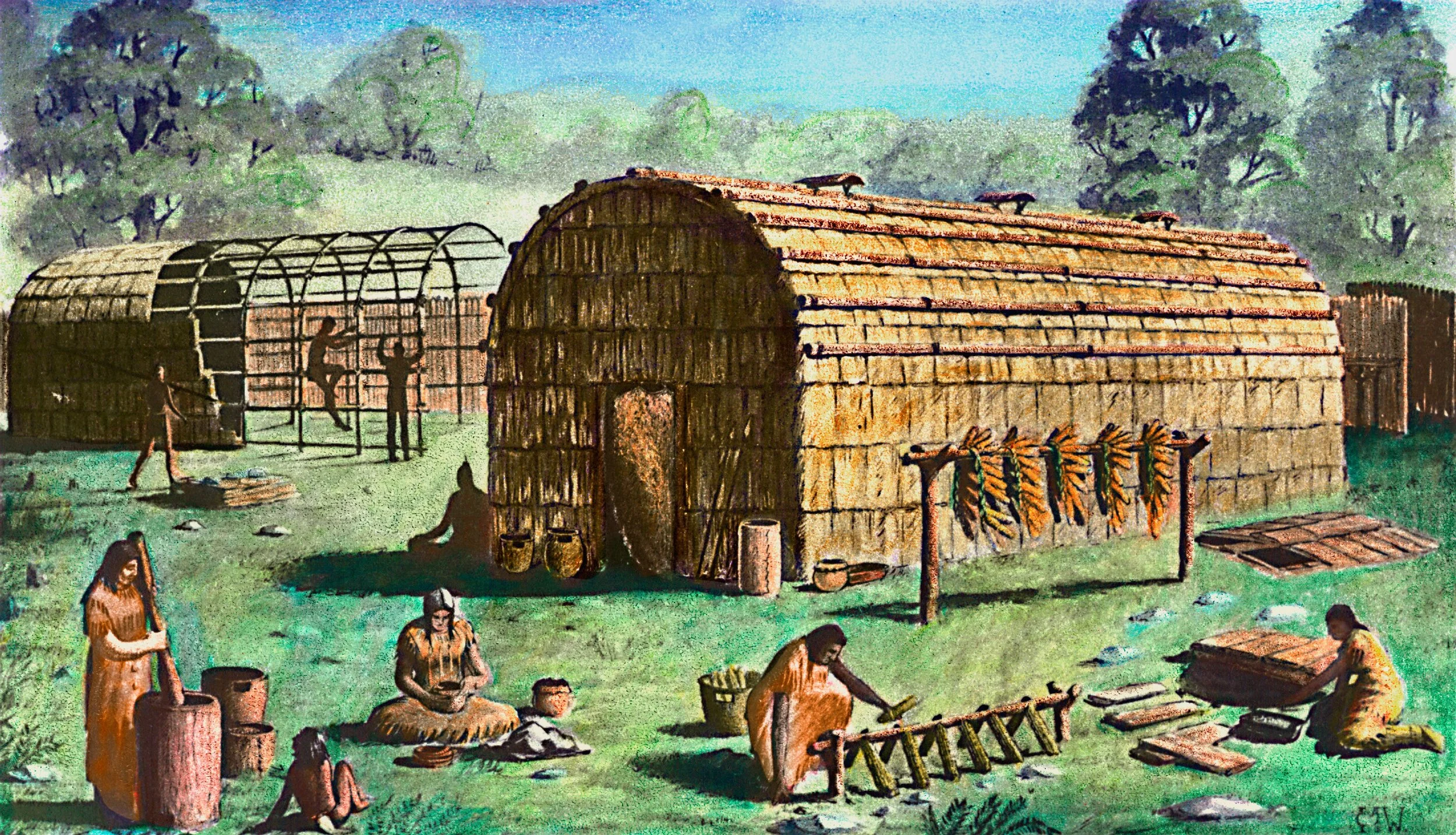The Longhouse - A Dwelling and Symbol of Cultural and Political Community
Native Americans, especially those such as the Iroquois that lived on the East Coast from the 12th century up until a period of mass migration and forced resettlement in 1784, would often live in large and elongated living quarters known as longhouses. Native American longhouses often consisted of a structure made of wooden poles, which were held together with leather straps. The Iroquois used bark or animal hides to cover the skeleton of the house. Longhouses were large, typically being 200 feet long, 20 feet high, and 20 feet wide. However, some longhouses have been found that are even larger than that, with one longhouse being 400 feet long. Instead of a pointed triangular roof that most modern western houses usually have, longhouses had rounded roofs. Inside the longhouse, wooden mats segmented a series of rooms. Down the middle of the longhouse was a central passage that was lit up using multiple fires. Longhouses had no windows; however, small holes were poked through the longhouse in order to get some sunlight into the interior of the house. Shelves served as a way to store items such as pots, clothing, and tools. Families also stored dried food, usually meats, inside of the longhouse. Native American villages were made up of multiple longhouses. Wooden fences, or palisades, surrounded the longhouses, with the purpose of acting as basic defense against other tribes and animals.
Longhouses are not unique to Native Americans and were found in other cultures as well such as in neolithic Europe or ancient Asia. However, for the Native American confederacy in modern-day New York known as the Iroquois, longhouses were a symbol of their culture and played an important role in their language and political organization. The Iroquois, or, the Haudenosaunee in their native language, meant ‘the people of the longhouse’, referring to the Iroquois’ perception of themselves as all being part of one communal longhouse. The five nations that made up the Iroquois confederacy were theoretically named after the doors of a longhouse, with tribes like the Seneca being called the ‘keepers of the west door’ and the Mohawks being called the ‘keepers of the eastern door’, which were based on their geographical location. Longhouses were communal dwellings and often had multiple families living inside of them at once. The multiple families were part of a clan and were all related to each other. The symbol of clans, usually animals such as bears and eagles, would also be displayed all around the longhouse, with the clan crest being present at the front of the longhouse. Women were the primary managers of longhouses and these Native American clans were matrilineal, meaning that ancestors were defined by the mother’s line. These clan units would often work together, despite them being split into multiple families. For the Iroquois, longhouses were a vital part of their existence, with a large amount of their culture and society being derived from longhouses and what they provided.
Sources:
http://www.nysm.nysed.gov/exhibitions/ongoing/native-peoples-new-york/mohawk-longhouse
https://www.warpaths2peacepipes.com/native-american-houses/longhouse.htm
